Inside Chocolate:
Dandelion Chocolate Trip – Belize
by Karen Fienberg
Connected Through Cacao
Listening to a beautiful symphony of bird songs as night faded to dawn, I slowly awakened, groggy from the prior day’s long travel from Denver. After a brief moment of wondering, “Wait, where am I?”, it soon hit me… this day, I called the beautiful Chaab’il B’e jungle lodge in Punta Gorda, Belize, home, and the day’s itinerary began with a tour of a cacao farm!
While traveling over the years, I’ve occasionally needed to pinch myself because of a dream come true. This, most certainly, was one of those times.
The Grounds of Chaab’il B’e Jungle Lodge (photo by Jennifer Murphy)
Chocolate Trips offered by Dandelion Chocolate, a superb craft chocolate maker in San Francisco and Japan, popped up on my radar about a year ago. With destinations including the Dominican Republic, Tanzania, and Belize, these origin trips immediately moved to the top of my travel list.
Belize worked best for our schedules (my boyfriend and I adventured together), plus travel via Denver looked just too tempting… so as soon as registration opened, we booked the Chocolate 301 Belize Trip for February 2019.
A Belize Howler Monkey (photo by Dominique Desrosiers)
The trip provided the opportunity of a lifetime, and we couldn’t wait to experience chocolate at origin, learning what goes into growing the wonderful cacao used by chocolate makers to produce the delicious bars many of us eat every day (and in some cases, several times per day)!
Fourteen people took part in our trip, hailing from New York, Washington, D.C., Texas, Montana, Colorado, California and Canada. Some were chefs… some food bloggers… others chocolate makers… while a few were simply along for the ride with partners or friends.
Ages ranged from twenty-four to sixty-eight, but from day one we all shared a love of chocolate, regardless of how each journey began. As the week progressed, the threads connecting us grew stronger… friendships in bloom.
Now, let me take you Inside Chocolate, for a look a back on this wondrous trip to Belize!
The Adventure Begins…
Groggy or otherwise, cacao exploration called, so we quickly prepared for the day ahead. After a short van ride along a dirt road, we arrived at the farm of Eladio Pop.
A slender and strong man on the cusp of sixty, Eladio greeted us with a huge smile and a machete. We wasted no time and began to walk the farm, soon enveloped by the cacao trees surrounding us.
Photo opportunities abound, and with Cheshire Cat grins, we stood next to the trees, touching the pods and looking out from between the branches.
As we continued along, Eladio talked about his Mayan ancestry… how he’d farmed the same land since the green age of thirteen.
He explained the traditions and knowledge passed from generation to generation on the same farm – working… living… eating together.
Holding up a termite mound, he shared how he began to live differently quite some time ago, how his heart entwined with nature after realizing that the termites and other creatures needed somebody…
…they needed his heart.
Eladio, a true steward of the land, intensely understands that we are all part of a larger cacao world. He recently lost one of his sons, sadly, but the loss also offered a glance into his strong, healthy perspective on the cycles of life –
“You are my brother, my sister, no matter where you come from. We all breathe the same oxygen. We need the trees, birds, bats and ants. We share this land and the Earth and without trees, the Earth will be sad. I want to leave something for the future, for this land.”
Man Made the Machete, Machete Never Made the Man
As we ambled along, he continually stopped at various trees and bushes. Eladio prefers to wield a machete as his main tool, rather than spray chemicals on his crops. With a swift hack of the large blade, he peeled away bark and leaves, revealing the hidden gems within – sweet sugar cane, aromatic ginger, and hearts of palm from the Pacaya plant.
We tasted delicious fresh corn off the stalk, and culantro (a close relative to cilantro) pulled straight from the ground. Not only do Eladio and his family eat off their land, they also utilize some of the plants for medicine. He sliced a bit of bark off a Cascarilla tree… explaining how it can be used for all types of digestive complaints.
We eventually stopped at a cacao tree with unripe pods. Using the machete, Eladio cut one off the tree, sliced it into several pieces, and then spread the pieces out on a palm leaf. He explained how one typically notices many happy faces in the unripe pod slices. Some of our group thought they saw Stitch’s face (from Disney’s Lilo & Stitch film) in one of the cacao pieces.
Do you see Stitch in this cacao pod? (Photo by Jennifer Murphy)
Fun fact — did you know that a machete or other sharp object is required to remove a pod from the tree? The pods do not fall off the tree on their own; they must be removed by humans or wildlife.
By this point, we were all anticipating the moment Eladio would cut a ripe pod off a tree, letting us taste the delectable pulp surrounding the beans. The experience proved divine, as we soon discovered the banana, mango, and pineapple flavors of the pulp.
The Heart of Cacao
We then took a short break at a concrete structure with a thatched roof. A hammock and Bible sitting inside, we quickly realized we’d entered Eladio’s serenity spot. His farm is his church, and he shares the gospel of cacao. Honored to be there, I felt as though Eladio revealed a sacred part of himself to our small group of eager-to-learn strangers.
Then it hit me… we were truly experiencing the heart of quality cacao. It all begins with a farmer who cares deeply for his corner of the world and its creatures. I never really thought about this part of the supply chain when enjoying chocolate before, but now I would undoubtedly never look at a chocolate bar the same way again.
As we made our way to the farmhouse for lunch, we met and chatted with one of Eladio’s sons. Then, after a delicious lunch prepared by Eladio’s wife, Virginia, and their daughters, we were treated to a demonstration of roasting beans over a fire by Eladio’s eldest daughter.
She cracked and winnowed the beans by hand (a technique I’ve since adopted myself when roasting beans at home). Using a metate and mano — a grindstone base and the stone held in the hand to grind on the base — she showed us how to grind the nibs into a paste.
Some of our group attempted the very deliberate motion required to use these tools, and we soon learned that it takes more muscle than one might think!
Finally, adding boiling water to the freshly-created paste, we indulged in this traditional Mayan drink.
Here’s a little-known fact — many Mayans are genetically lactose-intolerant. They sip the the traditional drink sans sugar, milk, coconut, cinnamon, or other spices, enjoying the nutritional benefits of 100% cacao. To be honest, I added a little sugar to mine.
Before ending our exceptional and informative visit at Eladio’s farm, we met Zoe and Maya, two of Eladio’s fifteen grandchildren, part of the next generation of cacao makers and stewards of the land. On Eladio’s farm, the gospel of cacao does indeed pass from generation to generation.
Metate Making Chocolate (photo by Alex Quinonez)
Diving Deeper Into Cacao
We enjoyed other activities during the next couple of days, including a tour of a local spice farm, and a visit to Nim Li Punit ruins. I found it fascinating to learn all about the different spices often used to flavor chocolate, such as vanilla and pepper.
Fun fact — did you know that vanilla plants don’t begin producing vanilla beans for three years? When they finally bloom, the flowers only stay open for one day, and they must be carefully pollinated within twelve hours of blooming!
Ball Court at Nim Li Punit Ruins (photo by Paul Mack)
We also journeyed to Sibun River Estate, diving a bit deeper into cacao farming as we explored the large-scale plantation. This 400-acre farm, established and owned by Hershey for many years, is now a professionally-operated citrus and cacao farm.
Due to the farm’s large size, we traversed the land on the back of a large citrus truck. Here I witnessed both flowers and pods in various stages of growth on the same tree, and saw pods growing directly out of tree trunk… quite enlightening to say the least.
A group of women, seated on small, stone stools, scooped wet beans out of already-split ripe pods of assorted colors, placing them into buckets.
Maya Mountain Cacao
We spent the next morning at Maya Mountain Cacao, a well-known, centralized fermentary in southern Belize. I especially looked forward to this segment of the trip, hoping to better understand the process of fermentation beyond what I’d read in books.
Maya Mountain Cacao, founded in 2010, really put Belize on the craft chocolate map. They were the first exporter in the country to produce high-quality, centrally-fermented, transparently sourced cacao. They centrally process all their cacao, purchased from four hundred different farmers, at their post-harvest facility here.
Our gracious hosts, Minni Forman, the vivacious Managing Director of Maya Mountain Cacao, and two employees, Roxy and Beau, enthusiastically explained the fermentation and drying processes to us. The area where the beans ferment in wooden boxes smelled slightly acidic, and, to my nose, like vinegar.
Dandelion’s Chocolate Sourcerer and our fearless trip leader, Greg D’Alesandre, noted how good this fermentary smelled. After a thorough Fermentation 101 lesson, we moved outside, discovering the area where cacao beans sat drying in the sun on large movable trays.
Colorful Cacao Pods (photo by Jennifer Murphy)
Interested in your own chocolate adventure with Dandelion? Click here to visit their website for all available options on their Experiences page.
NOTE: Photos by Karen Fienberg where not otherwise noted.

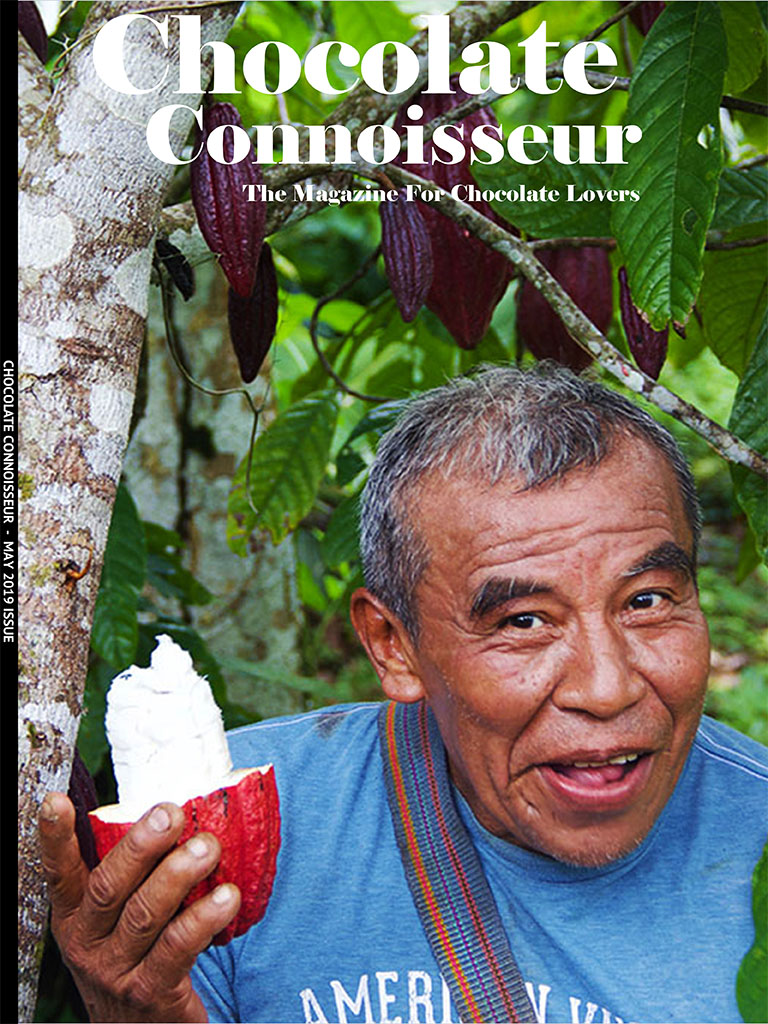

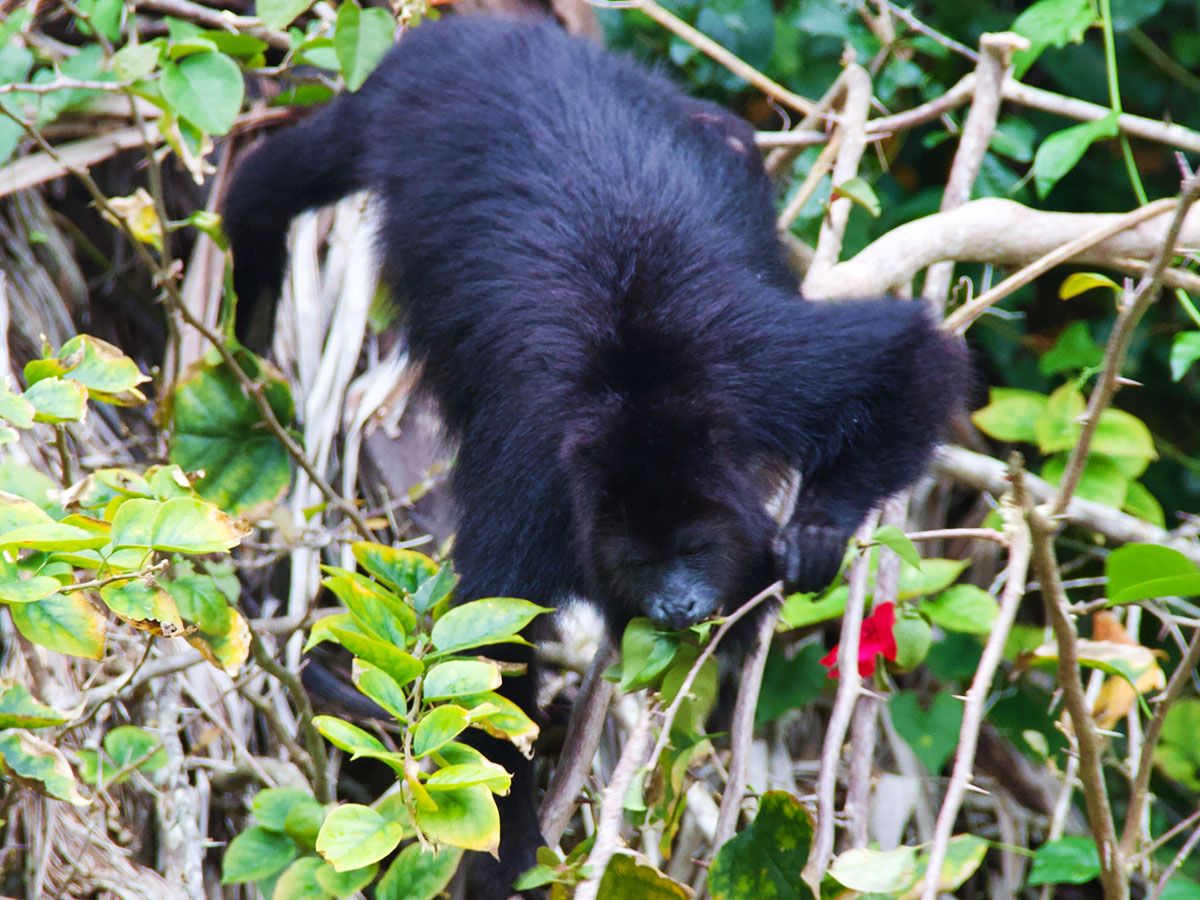
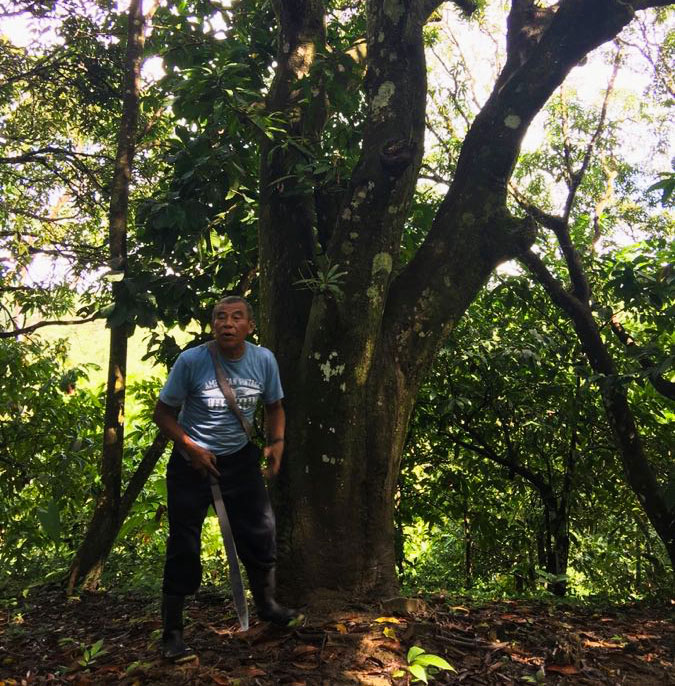
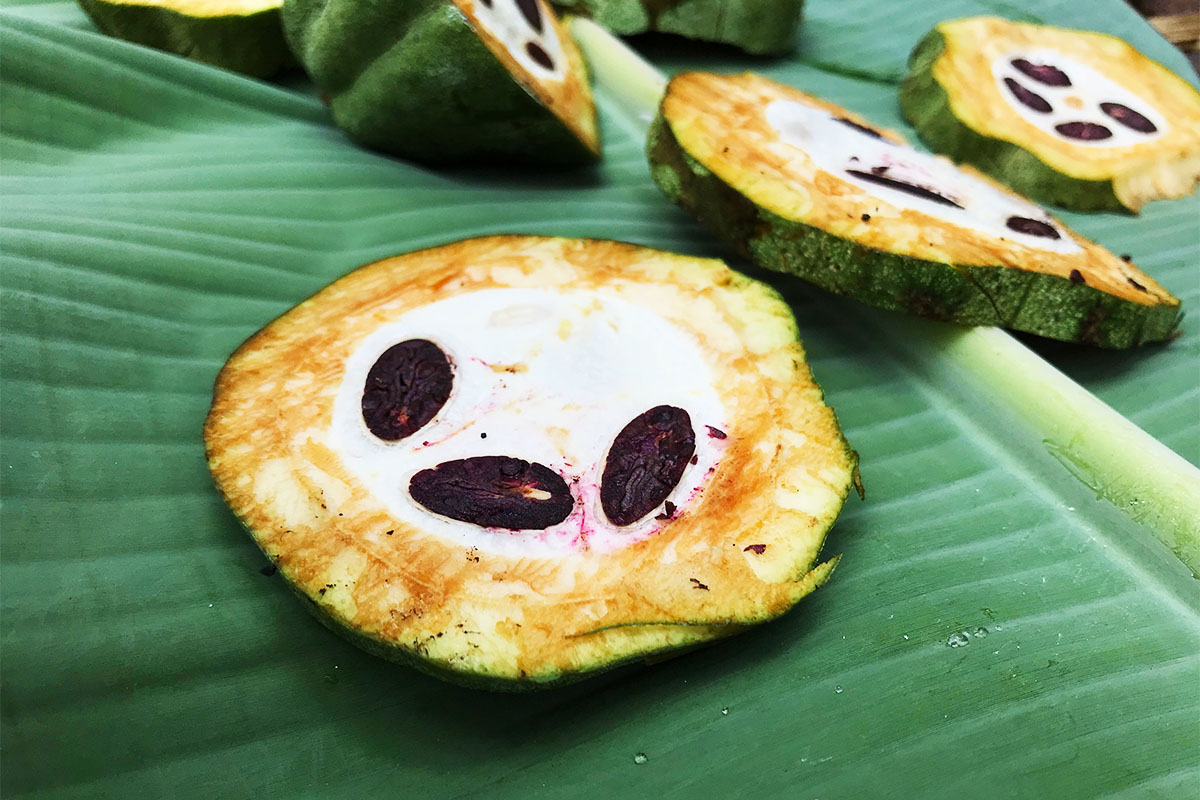
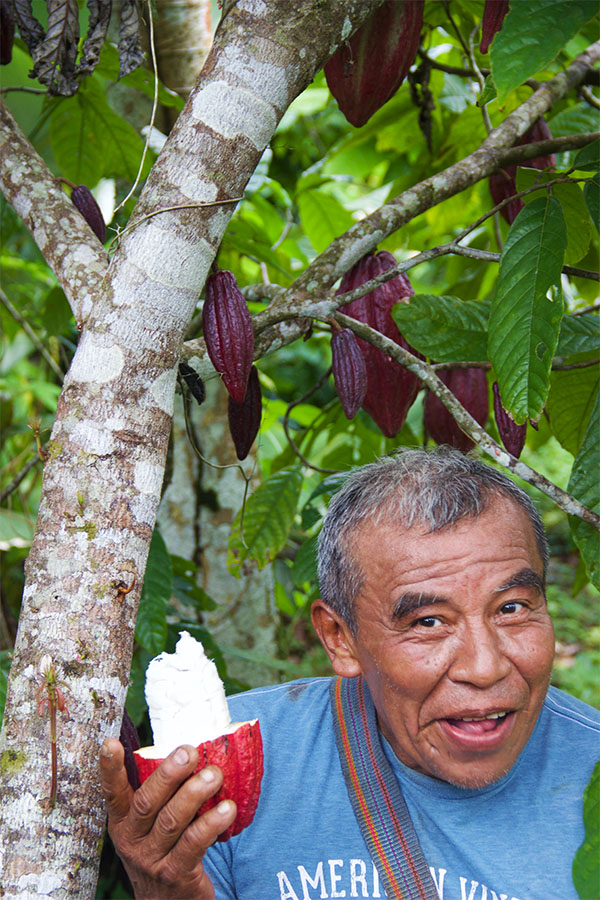
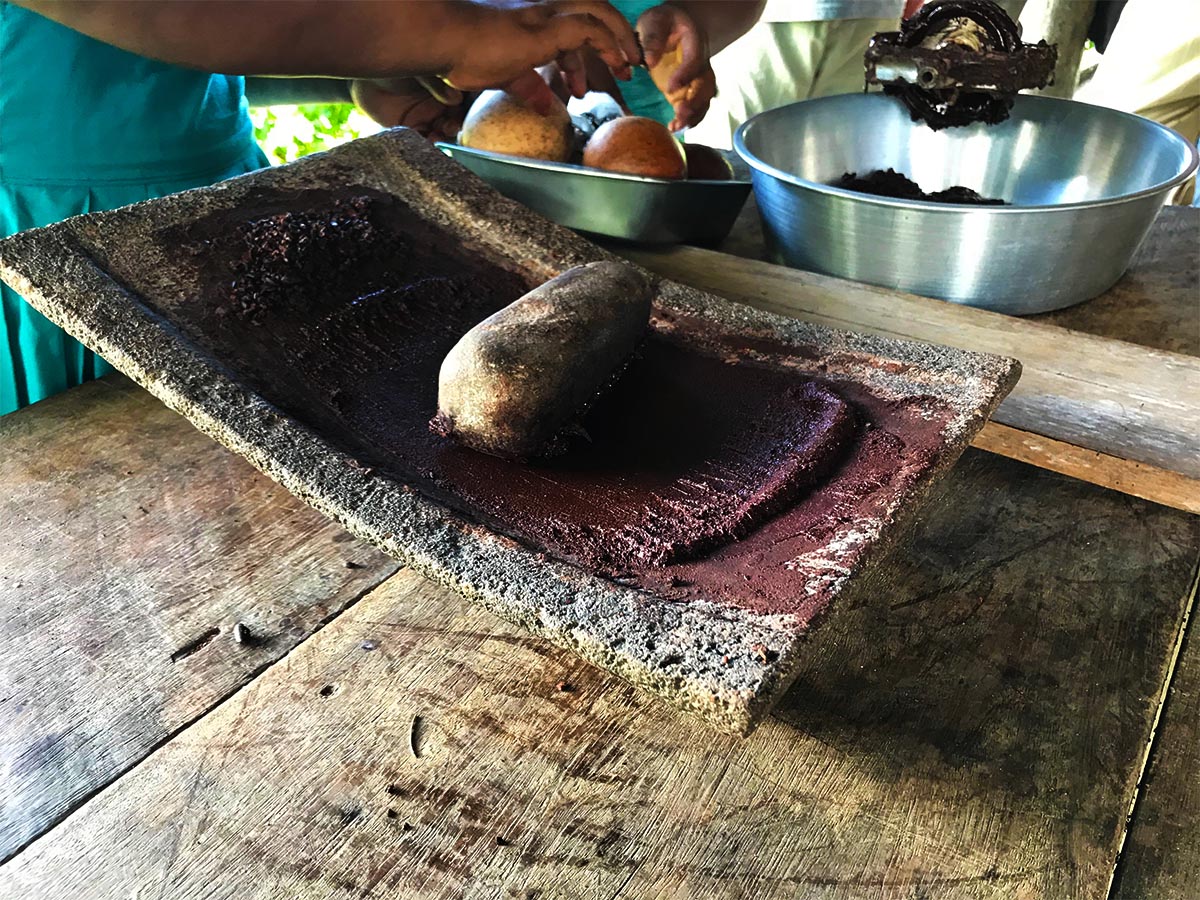
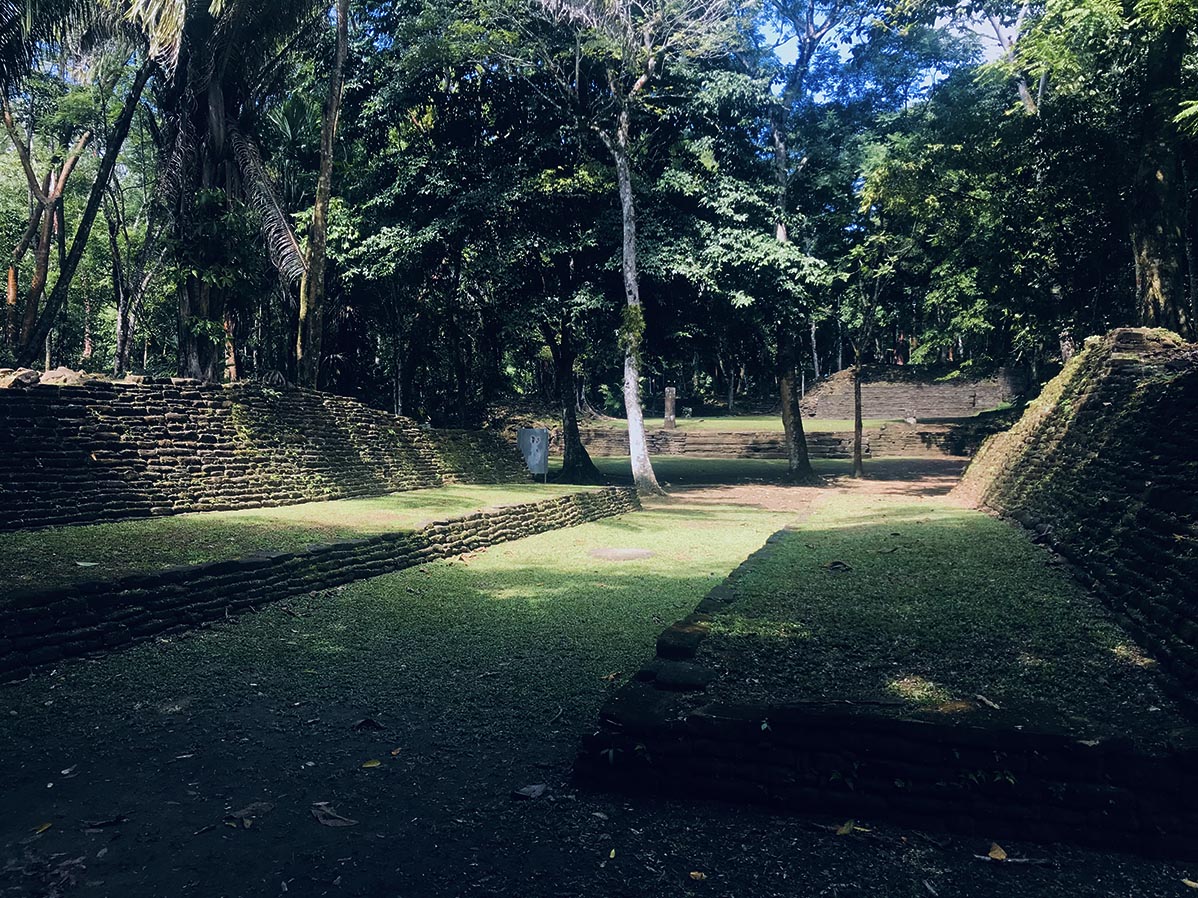
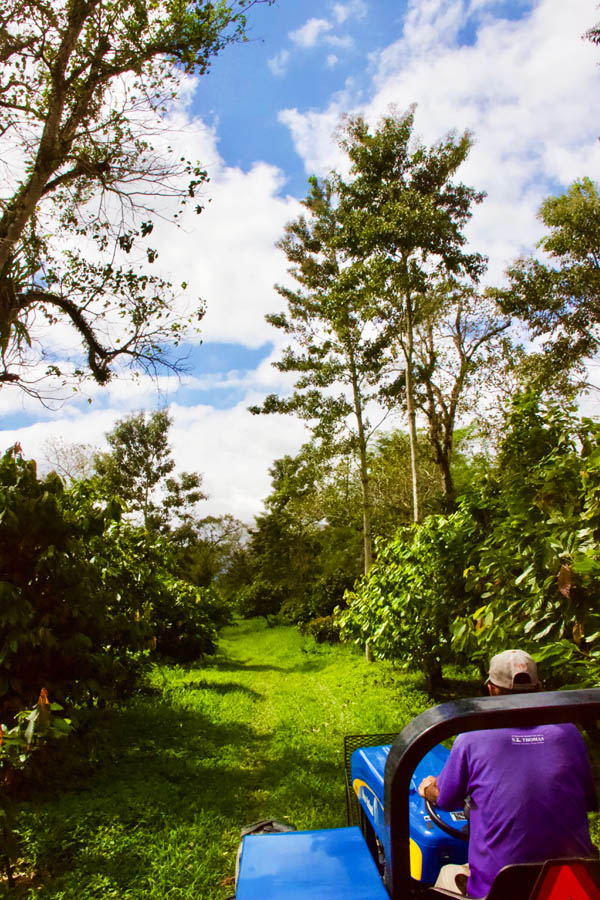
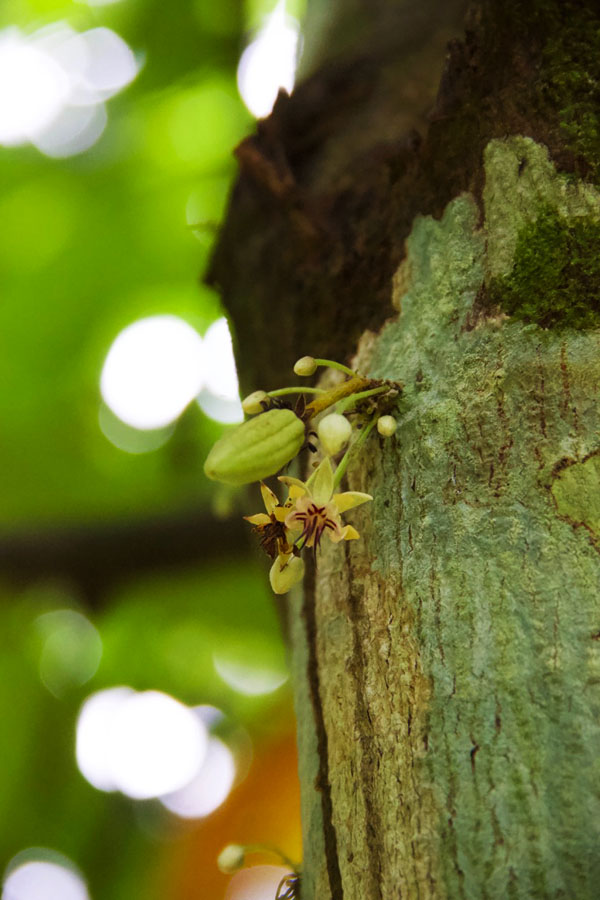



Great article, Karen! It made me relive some of those wonderful moments in Belize.
Thanks, Cristina. I relived our amazing trip as well while I wrote the article. What a magical week and what a great group of people.